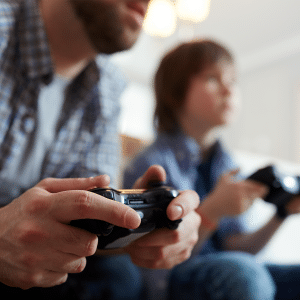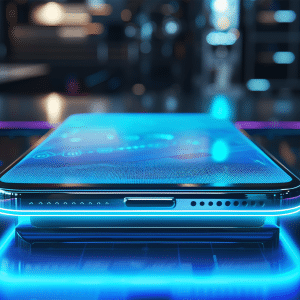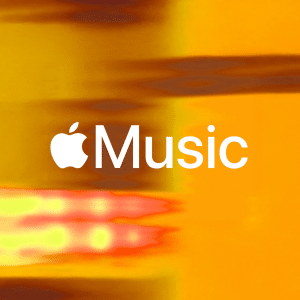 I’ll be honest in saying that I’m a Nintendo fanboy. I grew up on the system; it’s what turned me into the gamer I am today. In fact, I even have a photo of myself still in diapers, sitting on a chair in front of the TV and using my trusty Nintendo Zapper to down birds on Duck Hunt. Okay, more accurately my mom has the photo, and it’s a very embarrassing shot to say the least. The point is, Nintendo is in my blood, and I’ve been an avid backer of the Japanese-based video game giant for over a decade. That’s why it pains me so much to say the following.
I’ll be honest in saying that I’m a Nintendo fanboy. I grew up on the system; it’s what turned me into the gamer I am today. In fact, I even have a photo of myself still in diapers, sitting on a chair in front of the TV and using my trusty Nintendo Zapper to down birds on Duck Hunt. Okay, more accurately my mom has the photo, and it’s a very embarrassing shot to say the least. The point is, Nintendo is in my blood, and I’ve been an avid backer of the Japanese-based video game giant for over a decade. That’s why it pains me so much to say the following.
Nintendo is dying. It may not be now, it may not be soon, but the developer and publisher is slowly starting to lose all signs of life. In case you haven’t been in the gaming loop, Nintendo has been on a rapid downturn since the release of the Nintendo Wii. In fact, many consider the Nintendo Gamecube to be the company’s last successful console release. I couldn’t agree more. Ever since the Wii hit the market, I completely lost any desire to play Nintendo games, even series that I religiously followed like Super Mario Bros. and The Legend of Zelda. So what exactly happened to Nintendo, and why are they so lackluster in the modern age?
To be fair, it’s a 50/50 mixture of Nintendo’s console design and the game developers themselves. When Nintendo first released the Wii, it was met with great praise. People loved the “virtual reality” aspect to it, and it helped to immerse you more into the games. However, the sheen of virtual movement quickly subsided, specifically when Microsoft coined the Kinect. Microsoft’s version of virtual movement is a much more accurate experience and doesn’t require the aid of a special controller.
The Wii also became incredibly difficult to develop for. With Microsoft releasing its Xbox 360 and Sony its Playstation 3, the Wii looked completely obsolete. It’s graphics capabilities are severely lacking compared to its rivals, and it just doesn’t have the right hardware to run most of the engines that game developers use today. Because of this, most developers have stopped porting their titles for use on the Wii, since they would have to completely revamp their “next gen” creations for use on what many consider to be an archaic platform.
But Nintendo is trying to rise from its ashes by releasing what it considers its “next generation” Wii U console. There are a few key issues here, though, that may prove too much for Nintendo to overcome. For one, the Wii U isn’t a very upgraded system compared to its distant cousin. It boasts what Nintendo calls “better graphics, better hardware, and improved online services,” but according to recent screenshots and demo videos, the console doesn’t seem to be very much improved over its predecessor. Under this precedence, the Wii U should have the same exact issues that the Wii did, with many developers turning their backs on a system that is just “too difficult to develop for.”
Nintendo seems to be taking a subtle crack at Apple’s iPad, as well as Microsoft, with claims that the Wii U will offer some great living room entertainment options. Netflix, MLB.tv, and Hulu, are all services likely to appear on the Wii U console. Nintendo also offers an impressive array of arcade and casual titles via its Nintendo Shop, as featured on the original Wii and Nintendo DS/3DS handhelds. But with most casual game developers moving to platforms like Facebook, Android, and iOS, Nintendo may be hard-pressed to corner any piece of the casual gaming market.
The Wii U also features a brand new tablet-like controller. This controller has a touchscreen, and players will be able to change between on-screen handheld and full-screen TV mode on the fly. The “tablet” also features touch controls for some games, and Nintendo is promising a very intuitive experience for others that literally binds the television and Wii U controller together. The glaring issue, though, is that Nintendo’s touchscreen makes use of resistive technology that was featured in most smartphones created prior to 2007. The problem with this outdated technology is that it is often unresponsive and sometimes difficult to maneuver.
This lack of hardware, paired with a very outdated touch technology, could easily spell disaster for any hopeful Nintendo comeback. It is incredibly unlikely that any Apple or Microsoft users would shun their respective Android or iOS marketplaces in favor of a Nintendo Shop on a low-powered, small-screened, tablet and controller combo. And with Nintendo failing to embrace a huge upgrade in hardware, it’s not likely that the console is going to compete with Microsoft or Sony, especially since each rival company is expected to be gearing up to release a new generation of consoles. If that proves to be true, Nintendo will then technically be two generations behind, with a serious lack of cash flow and a rapidly diminishing fanbase.
I hate to see a once powerful developer that I loved and respected, fall so far from grace. Unfortunately though, if Nintendo doesn’t learn to embrace the new age, or get a grip on their floundering sales, I don’t see them staying on the gaming radar for much longer.
Photo Credit: Nintendo










